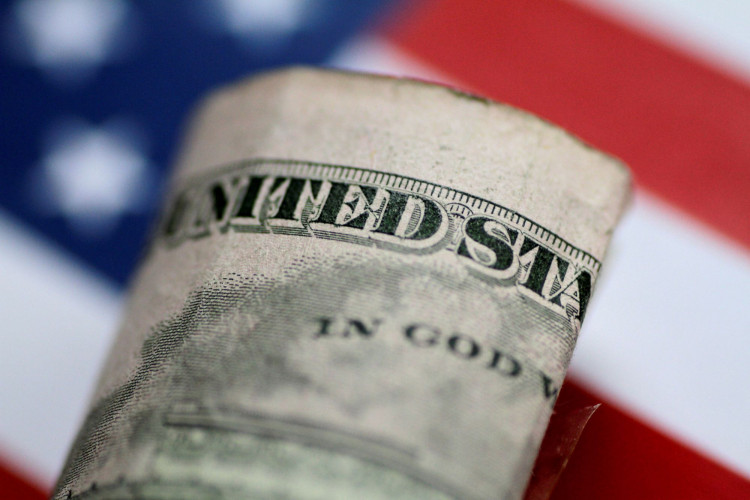The U.S. dollar is making a powerful comeback, and its upward trajectory may continue for an extended period.
Backed by a series of robust economic indicators, the U.S. dollar index is on track for its eighth consecutive weekly gain. In contrast, non-U.S. currencies, especially the euro, have been weakening, weighed down by a sluggish European economy.
This week, HSBC shifted its stance on the dollar in a report, suggesting that due to a gloomy global economic outlook, the dollar will continue to strengthen into next year. By the first quarter of 2024, they anticipate the euro-to-dollar exchange rate to drop to 1.03, a revision from their earlier estimate of 1.15.
Notably, the Eurozone is grappling with stagflation, where inflation rates remain above average, but economic growth is significantly below par. Analysts predict that the European Central Bank (ECB) will adopt a "hawkish" stance by pausing interest rate hikes, signaling a readiness to tighten should inflationary pressures intensify.
HSBC strategists highlighted in a report that due to Europe's slowing economic growth and rising demand for U.S.-related assets, the dollar should continue its ascent. Over the past month, every major currency has depreciated against the dollar, with heavyweight emerging market currencies like the Indian rupee nearing record lows. HSBC noted:
The dollar's resurgence as the dominant currency might persist even longer. As tightening policies begin to take effect and global growth prospects remain shaky, conditions should further favor a rising dollar.
HSBC believes that even if the global outlook dims, the U.S. appears relatively more attractive, and the dollar can withstand any easing policy cycles from the Federal Reserve.
The Bloomberg Dollar Spot Index is poised for its eighth consecutive weekly gain, marking its longest streak since its inception in 2005. HSBC expects the euro-to-dollar rate to drop to 1.03 by the first quarter of 2024, revising its earlier forecast of 1.15. The yen might depreciate to 148 per dollar during the same period, adjusted from a previous estimate of 132.
Behind the dollar's strength and the euro's eight-week decline is the widening gap between the Eurozone's economic downturn and the U.S.'s robust growth. Data released on Thursday showed that Germany, traditionally the Eurozone's growth engine, saw its industrial production decline for the third consecutive month in July. In contrast, the U.S. labor market remains resilient, with initial jobless claims unexpectedly dropping.
Eurozone's Stagflation Woes: A "Hawkish" Pause in Rate Hikes?
Since mid-July, the euro has depreciated more than 5% against the dollar. This continuous decline stems from widespread signs that the Eurozone economy is heading towards a recession, with market expectations suggesting the ECB will pause its rate hikes in its upcoming meeting.
After a series of weak economic data releases, the Eurozone's economic growth for the second quarter was revised down from 0.3% to 0.1%. Business surveys indicate a further slowdown in economic growth for August.
Simultaneously, a weaker euro could push up the costs of imported products like energy and food, complicating the ECB's fight against inflation. Rising oil prices, following Saudi Arabia and Russia's decision to extend production cuts, are also adding to inflationary pressures.
Analysts point out that with high inflation coupled with stagnant economic growth, the Eurozone is entering a period of stagflation. Michael Metcalfe, the head of global macro strategy at State Street Global Markets, said:
It's evident that the Eurozone is grappling with stagflation, with inflation rates persistently above average and economic growth significantly below.
Given this backdrop, there's skepticism about the ECB's ability to hike rates again. Derivative markets suggest there's roughly a 35% chance the ECB will raise its deposit rate from 3.75% to 4% on September 14.
In response, Dirk Schumacher, an economist at France's Natixis bank, noted:
The economic outlook is bleak, leading to more deflationary pressures. The ECB will likely adopt a "hawkish" pause in rate hikes, meaning no hikes for now, but with a clear message of concern about inflation. They'll be ready to resume tightening policies if price pressures become more stubborn.






